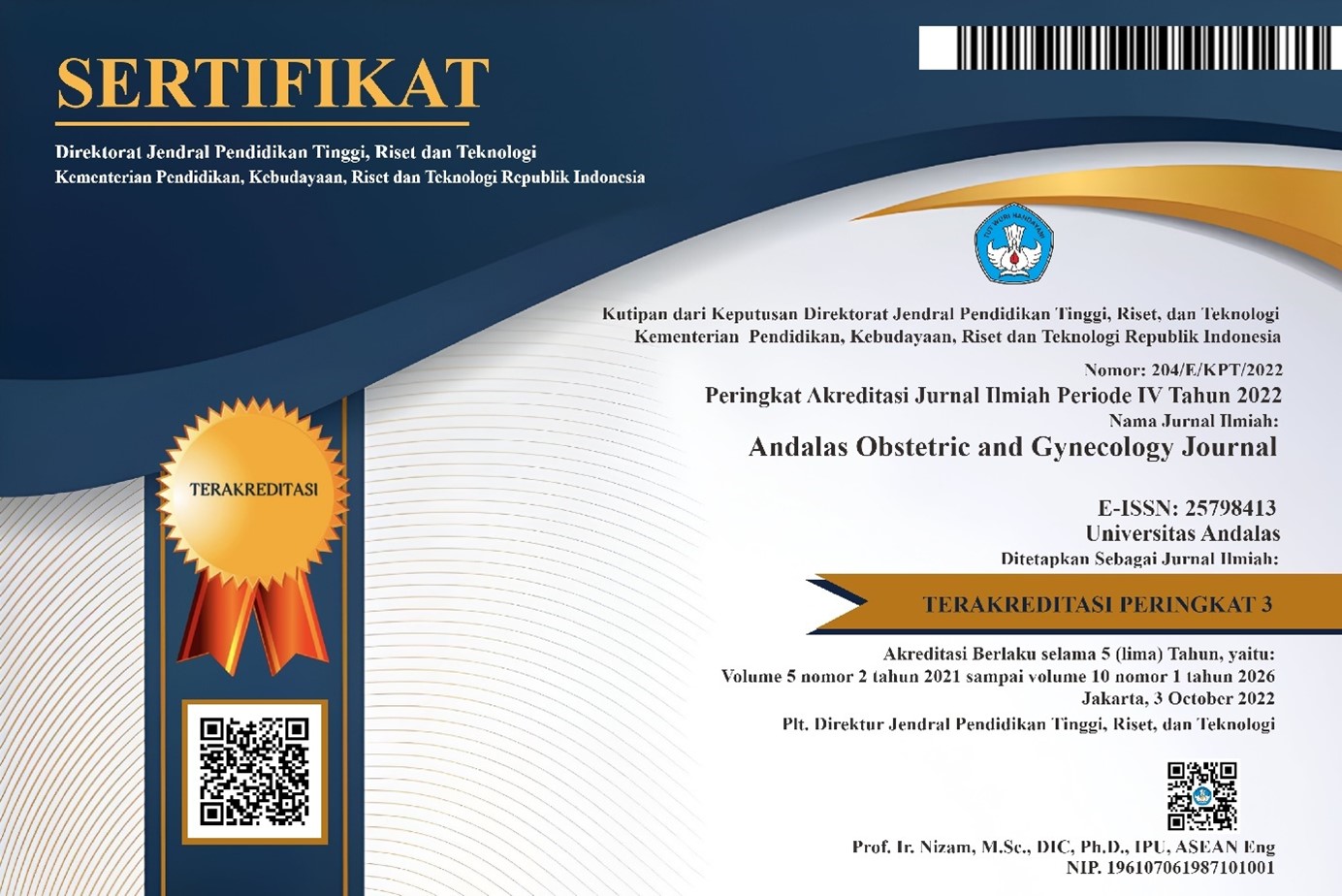Differences in Vitamin D Receptor Levels Between Women With Primary Infertility and Women Without Infertility
DOI:
https://doi.org/10.25077/aoj.8.2.703-711.2024Keywords:
Vitamin D Receptors (VDR), Vitamin D, InfertilityAbstract
Introduction: Many studies have been done on vitamin D, but there is still a lack of data regarding Vitamin D receptor (VDR) level and infertility, whereas VDR has a vital role in the action of vitamin D.
Objective: To determine the differences in VDR levels between women with primary infertility and women without fertility problems.
Method: This is a case-control study on women with and without fertility problems in Padang City, conducted from March 2023–January 2024. Serum VDR levels (ng/ml) were examined using the ELISA method in the Biomedicine Laboratory at Andalas University. Differences in VDR levels were calculated using the independent T-test.
Results: There were 60 subjects divided into 30 subjects with infertility and 30 subjects without fertility problems. Subjects with primary infertility had more 31-35 years and >35 years old patients (54.8% and 66.7%), more overweight and obese BMI patients (50% and 83.3%), and had experienced infertility for 1-4 years (73.3%). The mean VDR levels in infertility subjects were lower than in subjects without fertility problems (1.73±0.92ng/ml and 2.35±1.30ng/ml), where this difference was statistically significant (p=0.036).
Conclusion: VDR levels influence the incidence of primary infertility.
Downloads
Published
Issue
Section
License
Copyright (c) 2024 Shreshta Dewi, Haviz Yuad, Husna Yetti

This work is licensed under a Creative Commons Attribution 4.0 International License.
Copyright
Authors who publish with this journal agree to the following terms:
- Authors retain the copyright of published articles and grant the journal right of first publication with the work simultaneously licensed under a Creative Commons Attribution 4.0 International License that allows others to share the work with an acknowledgment of the work's authorship and initial publication in this journal.
- Authors are able to enter into separate, additional contractual arrangements for the non-exclusive distribution of the journal's published version of the work (e.g., post it to an institutional repository or publish it in a book), with an acknowledgment of its initial publication in this journal.
- Authors are permitted and encouraged to post their work online (e.g., in institutional repositories or on their website) prior to and during the submission process, as it can lead to productive exchanges, as well as earlier and greater citation of published work (See The Effect of Open Access).
License:
Andalas Obstetrics and Gynecology Journal (AOJ) is published under the terms of the Creative Commons Attribution 4.0 International License. This license permits anyone to copy and redistribute this material in any form or format, compose, modify, and make derivatives of this material for any purpose, including commercial purposes, as long as they credit the author for the original work.







